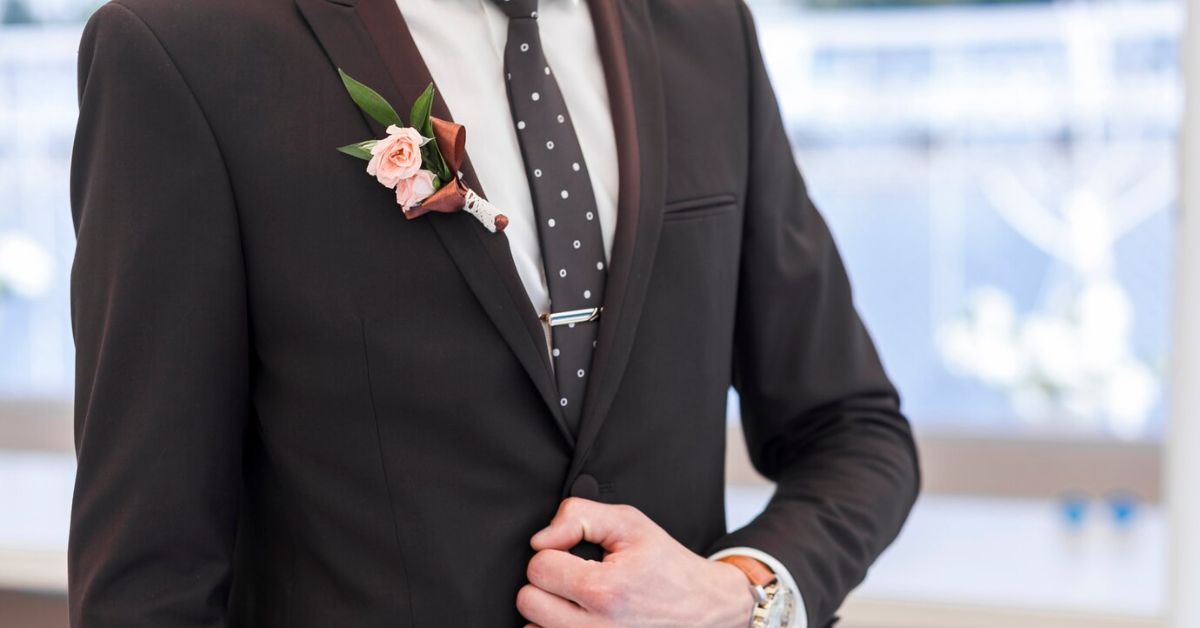When it comes to planning a wedding, the sartorial focus is often on the bridal gown. However, groom attire plays a pivotal role in complementing the ceremony’s aesthetic and ensuring that the groom feels comfortable and confident on this special day. Selecting the perfect wedding suits is not just about style; it’s about crafting an ensemble that resonates with the occasion’s significance.
Understanding the Basics of Groom Attire
The first step to choosing the right wedding suits is understanding the dress code. Whether it’s a black-tie event, a casual beach wedding, or something in between, the level of formality will dictate the suit’s fabric, colour, and style. A traditional tuxedo might be the go-to for a formal affair, while a linen or lightweight wool suit is ideal for a summer or destination wedding.
Fabric and Fit: Prioritising Comfort and Elegance
The fabric of the wedding suit is a critical component that determines the look and feel of the outfit. Wool, known for its durability and breathability, is a classic choice. For warmer climates or seasons, materials such as cotton and linen offer a cooler, more comfortable option. The key to looking sharp, regardless of fabric choice, is a proper fit. A well-tailored suit will flatter the groom’s body and enhance his overall appearance.
Colours and Patterns: Reflecting Personal Style and Wedding Theme
The colour and pattern of the suit should reflect the groom’s personal style and coordinate with the wedding’s colour palette. While dark hues like navy, charcoal, and black are traditional favourites, lighter shades and subtle patterns can add personality and flair to the groom’s outfit, making him stand out while still maintaining a cohesive look with the bridal party and the decor.
Accessorising: The Finishing Touches to Groom Attire
Accessories such as ties, pocket squares, cufflinks, and shoes can transform the wedding suit from basic to exceptional. These elements allow the groom to inject his personal touch, whether through a pop of colour, a unique pattern, or luxurious materials. However, it’s essential to be mindful of the wedding’s style and not to over-accessorise, as the aim is to complement, not overshadow, the ensemble.
Seasonal Considerations: Dressing for the Occasion and Weather
The season in which the wedding takes place should influence the choice of groom attire. Heavier fabrics and darker colours may be more suitable for autumn and winter ceremonies, whereas lighter fabrics and paler shades work best for spring and summer events. Seasonal considerations also extend to the footwear, with boots or brogues being more appropriate for colder months and loafers or derby shoes for warmer weather.
Customisation: The Value of Tailor-Made Wedding Suits
Opting for a custom-made wedding suit ensures that it will fit the groom perfectly and meet all his specifications. From the lapel style to the number of buttons, every aspect of the suit can be customised to achieve the desired look. And while bespoke options may come at a higher cost, the investment in a suit that feels and looks impeccable is worth considering for such an important occasion.
Budgeting: Balancing Quality and Affordability
A wedding suit is an investment, but it doesn’t have to break the bank. It’s possible to find a quality suit that aligns with the wedding budget. The groom should establish his budget early on and seek out options that offer the best value for money. Rentals are an economical alternative, but purchasing a suit provides the benefit of being able to wear it for future occasions.
Coordination with the Bridal Party: Ensuring a Cohesive Look
The groom’s attire should be coordinated with that of the bridal party to ensure a harmonious visual effect. This can involve aligning the colour of the groomsmen’s suits with the bridesmaids’ dresses or selecting tie patterns that complement the wedding’s theme. Attention to these details helps create a beautifully integrated aesthetic for the wedding day.
Making a Statement: Personalisation and Unique Touches
While traditional wedding suits are always in style, there’s room for personalisation. From a distinctive lining inside the jacket to monogramming, these unique touches can make the wedding suit even more special. It’s an opportunity for the groom to express his individuality and make a statement that reflects the couple’s personality.
Timeframe: Planning Ahead for the Perfect Wedding Suit
One crucial aspect often overlooked is the timeframe for selecting and tailoring the wedding suit. It’s advisable for the groom to start the process several months in advance to allow ample time for fittings and adjustments. Last-minute rushes can lead to unnecessary stress and may limit the options available.
Seeking Professional Advice
Choosing a wedding suit can be a daunting task, but professional advice can simplify the process. Suit specialists and tailors offer valuable insights on the latest trends, best fits, and most suitable fabrics for the occasion. They can help navigate the myriad of options and ensure the groom makes an informed decision.
Making the Right Impression on the Big Day
The wedding suit is more than just attire; it’s a symbol of the groom’s role in the ceremony and the start of a new journey. By selecting a suit that is comfortable, stylish, and well-fitted, he sets the stage for a memorable day full of elegance and joy.
Conclusion
In summary, choosing the right wedding suits involves consideration of formality, fabric, fit, and personal style. By paying attention to these elements and planning ahead, the groom can ensure that his wedding attire not only complements the significance of the occasion but also enhances his confidence as he takes a pivotal step into married life.











